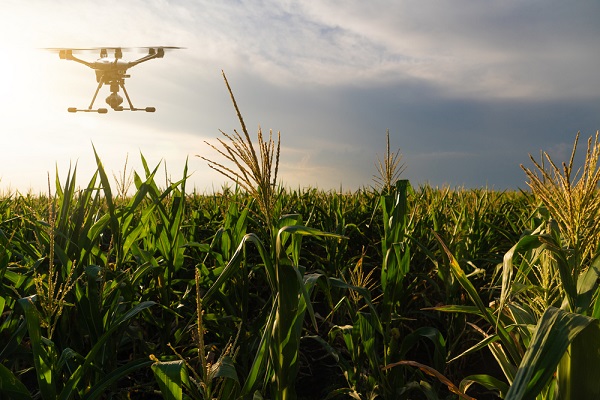Precision Agriculture Bolsters Crop Insurance but Many Challenges Remain

By: Olivia Overman
The global crop insurance market was valued at $34 billion in 2019 and is projected to reach $53 billion by 2027, according to Allied Market Research. This growth can be attributed primarily to the impact of digital technologies in the industry as precision agriculture continues to make crops more profitable for farmers, helping improve crop quality as well as increasing the value of farmland.
Yet, while improving technologies such as smart irrigation systems, soil quality monitoring technology and automated machinery support farmers, there are headwinds that are out of their control.
“From a weather standpoint, whether it is wildfires out West, severe thunderstorms in the Midwest, or droughts throughout the entire country, farming is becoming more and more challenging,” says Dirk Pollitt, vice president, Nationwide Agribusiness. “From a property-casualty carrier perspective, it becomes an issue around managing the severity curve, which has been an issue throughout the entire industry over the course of the last couple of years.”
Changing weather patterns led to the closure of the Mississippi River in October 2022 when water levels were at their lowest in a decade, according to CBS News. As barge traffic came to a halt, the financial impact was felt far and wide—and particularly by the farming community.
“It caused increased costs for our grain producers just simply trying to get their grain to market,” says Kenneth Grothe, assistant vice president, precision agriculture product manager, Hartford Steam Boiler. “This is a big issue that we need to consider, along with the impact of inflation in our marketplace.”
“While drought can change from year-to-year, it is definitely on the minds of farmers, modelers, insurance and reinsurance carriers,” says Jeff Bahr, head of sales and service, RCIS. “We expect drought to be a dominant crop risk in the coming years.”
When it comes to input costs, “the cost of fertilizer and pesticides are substantially higher now than in years past and are another significant concern in the farming sector,” Bahr says. “Costs of fertilizer and pesticides have risen over the past few years, which was made worse by the war in Ukraine.”
Further, inflation is also causing unprecedented increases in just about all costs. “I don’t know that anybody quite predicted that it would be as rapid and as significant as it has been—just the cost of diesel fuel from a farmer’s standpoint is a real challenge,” Pollitt says.
On the flip side, rising commodity prices are at least helping farmers offset input costs. In particular, commodity prices for crops such as corn, soybeans and wheat have increased. Unfortunately, “rising commodity prices and increased price volatility have dramatically increased coverage and the cost of crop insurance, says Dan Bird, senior vice president, national sales manager, Rain & Hail. “However, growers have demonstrated that they understand the value of the increased protection and are willing to pay for it.”
With increasing crop values, “farmers are adding additional coverage options to cover higher valued crops,” Bahr says. “Margin protection is a federal crop insurance product option for farmers to consider and in 2022 the number of policies sold nearly doubled, according to the USDA 2022 RMA Summary of Business.”
Technology advances in the agriculture industry continue to help farmers improve yields and manage their operations. For instance, “seed technology has improved yields over the past 50 years for corn and soybeans and there has been a steady increase every year on the number of bushels per acre of corn and soybeans that can be produced on a farm,” Bahr says.
Additionally, “there are a lot of tech companies investing in weather predicting, satellite imagery, pestilence issues, fertilizer need, damaged crops and overall plant conditions, so the farmer can more easily pinpoint the areas of planted fields that are most distressed.”
As the industry continues to change “with the many more coverage options available to growers, agents truly have to be crop insurance experts now more than ever before,” Bird says.
Olivia Overman is IA content editor.










